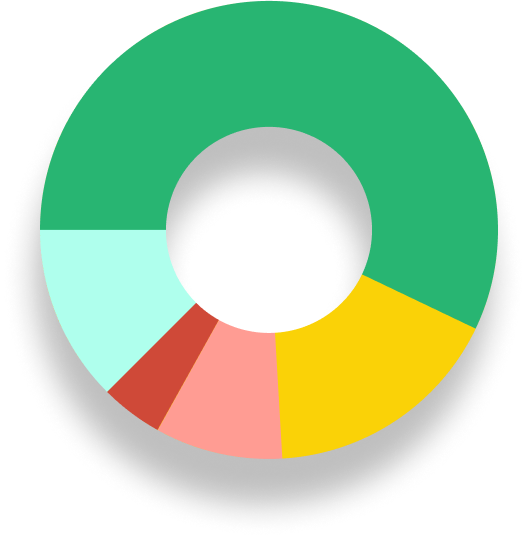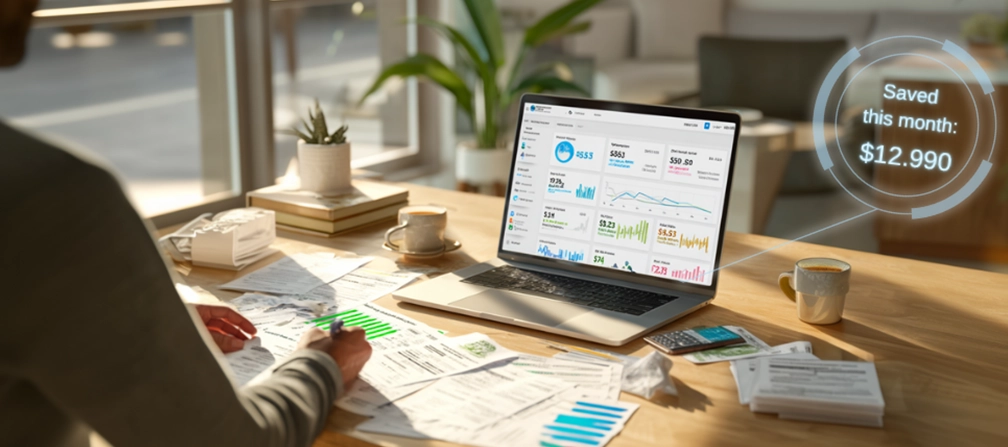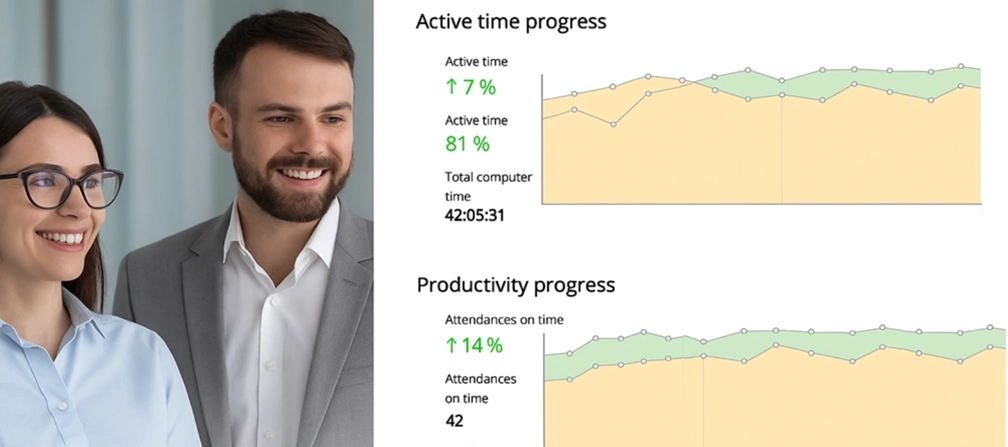This article is brought to you by WorkTime, a non-invasive productivity monitoring solution trusted by businesses for over 25 years.
Micromanagement hurts your business - here’s why
Micromanagement and strict control are often seen as the recipe for success. Managers assume that if every move is monitored, no issue or unproductive moment goes unnoticed. But does it really work that way? Unlike effective productivity monitoring, micromanagement doesn’t boost productivity - it kills it. When leaders obsess over monitoring every small detail, they create an environment of mistrust and pressure instead of motivation and synergy. As a result, it slows down the entire company’s growth.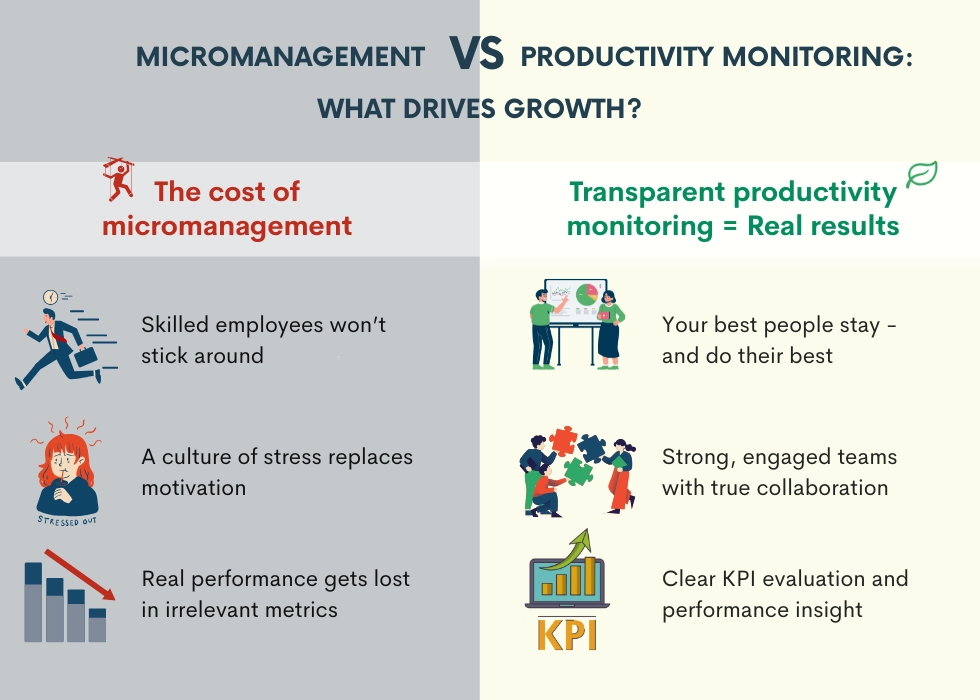
You may lose your best talent
Micromanagement drives away exactly the people companies need most: high-skilled, independent, self-motivated employees who value autonomy and trust. These employees are capable of solving problems without close supervision. But under constant control, even top talent will burn out. When these employees leave, it’s not just a loss of skill. It’s also a financial hit due to recruitment costs, onboarding time, lost productivity, and potential damage to your company’s reputation. As a result, micromanagement and intrusive productivity monitoring often lead to retaining employees who rely on constant guidance and wait for instructions.Micromanagement builds a toxic workplace
Micromanaged teams quickly lose the synergy vibe. When every move is questioned or controlled, trust disappears. When managers monitor employee productivity intrusively, employees stop sharing ideas, slowing the innovation. Then, the creativity drops and collaboration weakens. People are not motivated to perform their best when they feel watched. When employees feel trusted, they work better. A lack of psychological safety leads to survival mode instead of delivering high performance.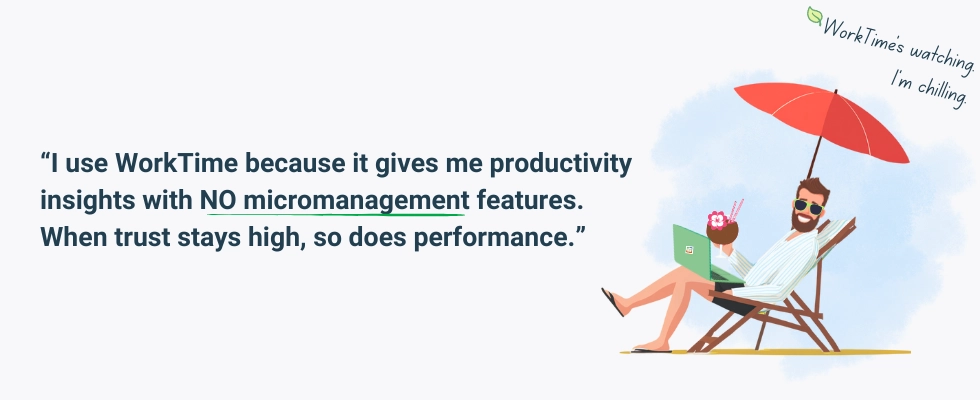
Excessive control ≠ effective performance evaluation
Micromanagement traps managers in a cycle of constant oversight, tracking every mouse movement, every pause, and every idle second. This obsession with minute details is far from what really matters: evaluating employee KPIs accurately. When managers focus on activity rather than results, they ignore employees’ contributions to company growth. Furthermore, this approach forces employees to spend more time “looking busy” or reporting activities instead of concentrating on high-value tasks. As a result, time and money are wasted on invasive surveillance rather than improving performance. Effective productivity monitoring should focus on outcomes, not constant control.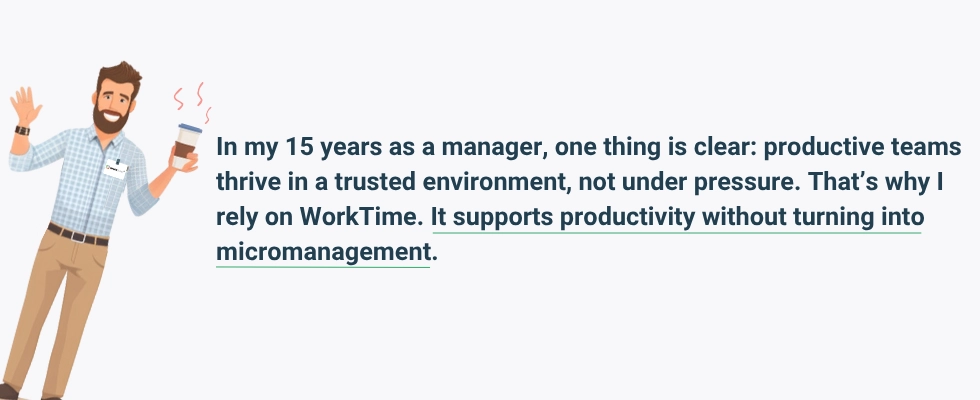
Monitoring or micromanagement? 3 red flags vs. safe alternatives
Productivity monitoring works best when it’s objective and focused on results, not when it turns into controlling every move. But where is the line between effective productivity tracking tools and micromanagement? Let’s look at the warning signs and explore transparent alternatives.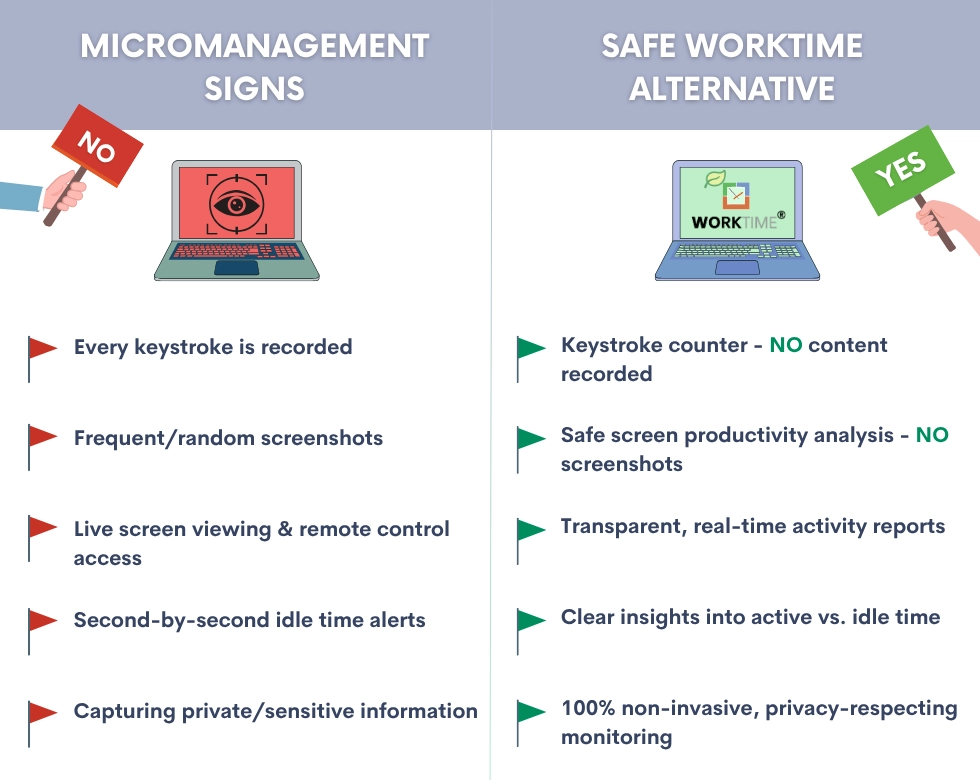
Recording every keystroke vs. safe keystroke counting
Keystroke logging is among the most invasive features in monitoring tools. Why is this micromanagement? Because such tools not only monitor employee productivity but also track every character typed. 1. It shows a lack of trust and creates pressure, fear, and a sense of being constantly watched. 2. It works, but not as effectively as productivity tracking tools. Keystroke data doesn’t reflect real productivity. It creates data overload with no meaningful insights. 3. This monitoring feature can have serious legal and financial consequences. Recording typed content such as passwords, private messages, or health data can lead to legal violations. WorkTime keystroke counter is a safer and more effective alternative. Unlike full keylogging, this method tracks how many keys are pressed without recording content. It provides productivity monitoring insights without invading their privacy. Why is it better?- Sensitive information is not collected;
- Zero risk of data breaches;
- 100% compliant with GDPR, HIPAA, PIPEDA, and more;
- Privacy respected. Reputation protected.
Random/frequent screenshots vs. screen productivity analysis
Random or frequent screenshots, live screen viewing, and remote control features allow managers to watch or even control their computers in real time. While meant to “ensure productivity,” these practices often cross the line into micromanagement. Employees on Reddit frequently complain about such invasive productivity tracking tools. They highlight how constant screenshot requests interrupt their workflow and cause unnecessary stress. Many describe the experience as excessive surveillance. This kind of monitoring is ineffective for several reasons:- It interrupts workflow and focus. Constant pop-ups break concentration and increase stress.
- It harms employee morale and trust, leading to disengagement.
- It generates excessive, often irrelevant data, capturing personal content that wastes review time.
- It doesn’t monitor employee productivity. Seeing a screen doesn’t reveal how effectively work is done or the employee’s contribution to company goals.
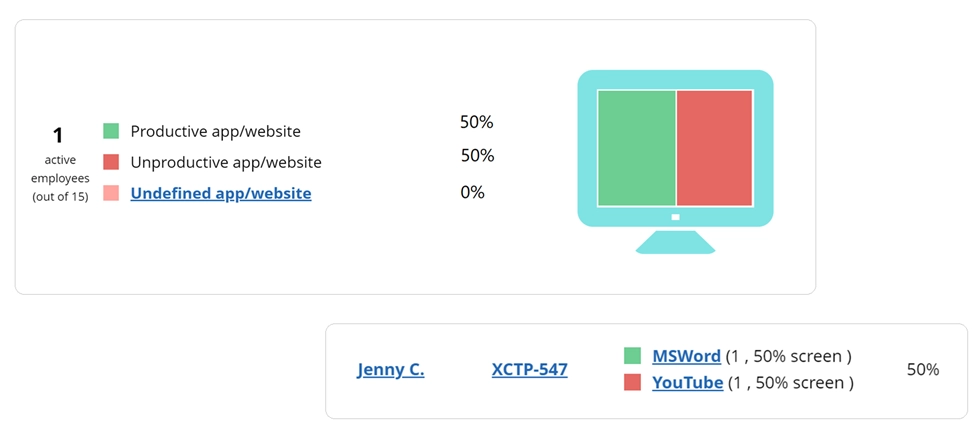

WorkTime analyzes an employee's screen productivity in a non-invasive manner. It categorizes all apps, docs, and websites as either productive or unproductive. Take a glance at this report to evaluate your team's productivity right now.
Start free trialTracking idle second-by-second vs. effective activity monitoring
Some monitoring tools track inactivity down to the second. Pause for a minute? Red flag. Performance dips slightly, even just once on a Friday after a solid week? Another alert. It can be regarded as an automated micromanagement that ignores context completely. This kind of second-by-second monitoring communicates mistrust and enforces an unrealistic expectation of nonstop activity. It ignores the reality that productive work isn’t constant and linear. People need brief pauses for thinking, planning, or simply recharging. In contrast, WorkTime employee productivity monitoring software takes a balanced and respectful approach. Instead of flagging every moment of idle time, it tracks active and idle time and analyzes how it affects productivity. Thus, you get:- A more relaxed, trust-based work atmosphere;
- Reliable data on employee activity;
- Objective data for managers to evaluate real contributions;
- Privacy-respecting, non-invasive productivity monitoring.
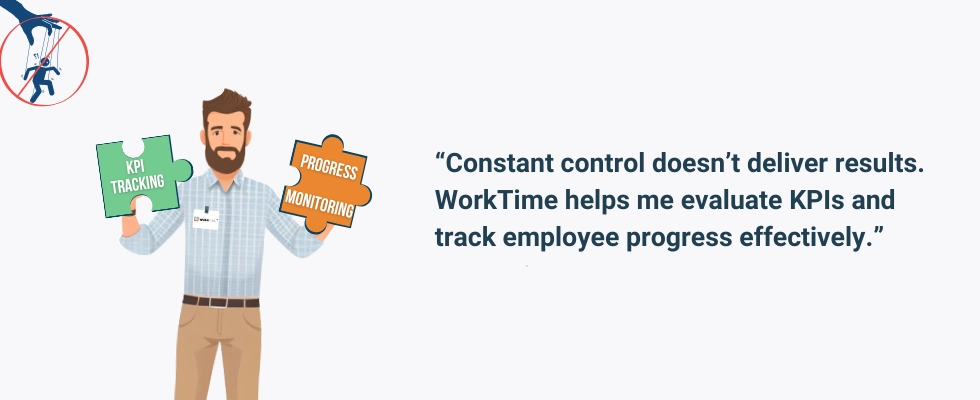
WorkTime - 100% productivity monitoring, zero micromanagement
WorkTime is a micromanagement-free productivity monitoring solution. It offers all the insights you need to boost productivity without invading privacy, stressing your team, or crossing ethical lines. What makes us the best productivity monitoring software?- Text list100% non-invasive and privacy-respecting;
- Focused on real results, not control;
- Trusted by businesses for over 25 years;
- Fully compliant with GDPR, HIPAA, PIPEDA, & more;
- Lightweight, simple reports with zero micromanagement.







